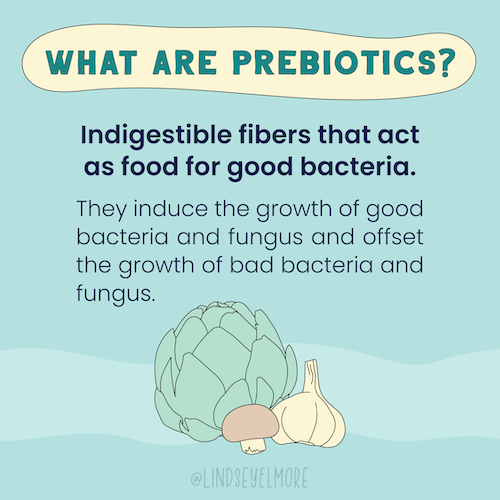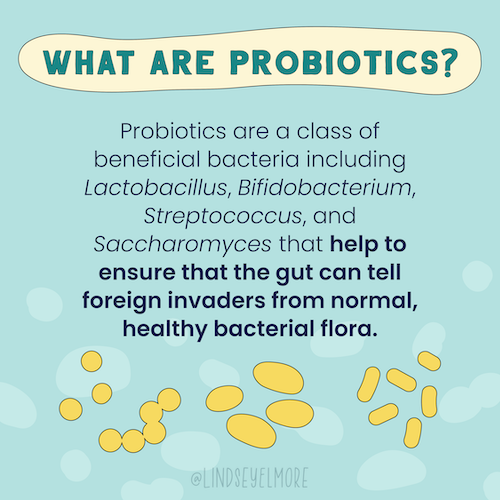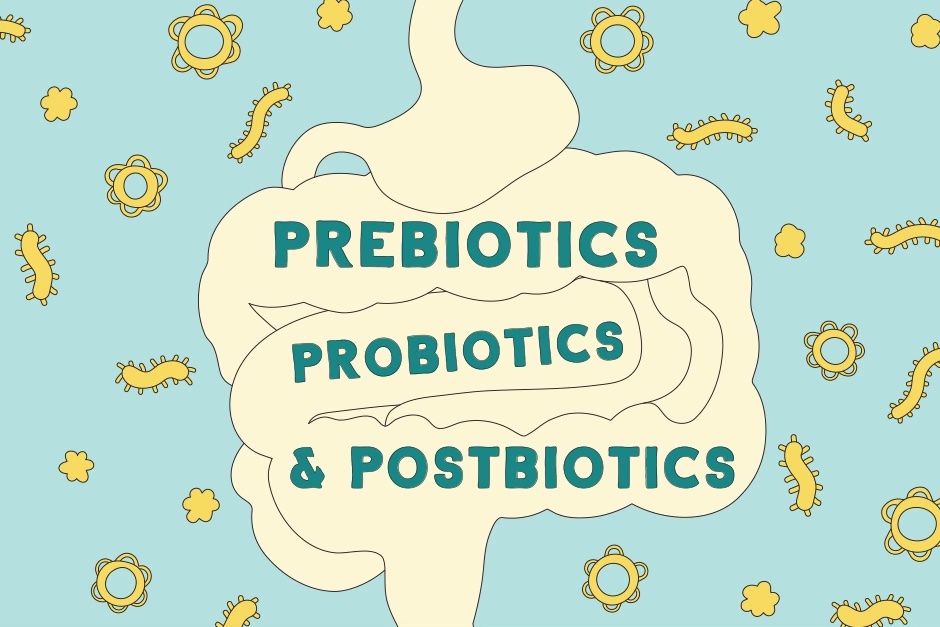The gut is absolutely key to health, and bacterial diversity is one of the hallmark signs of gut health. So you’ve heard of probiotics. You may have even heard of prebiotics. But how much do you know about postbiotics? Let’s break it down and look at the importance of pre, pro and postbiotics and how to get more of them.
Pre-, Pro-, and Post-Biotics

Most people know the importance of gut health and the role of quality probiotics. But it’s not just about popping a probiotic pill once a day. Understanding these microorganisms and how to support them will help ensure a healthy gut.
Prebiotics
Prebiotics are indigestible fiber that act as food for probiotics. Because the body can’t break down prebiotic fiber, they pass through the upper part of the gastrointestinal tract. In the colon, gut microflora ferment the fibers. In a nutshell, prebiotics are food (nonliving indigestible fiber) for live, active bacteria in the gut.

Probiotics
Probiotics are beneficial bacteria that reside in the gut and help the body distinguish between beneficial bacteria and harmful invaders and pathogens. Making sure you have a healthy flora goes a long way to boost immune function and support gut health, proper digestion, respiratory and urinary health, and even mental health. (Find out more about the health benefits of probiotics in this post.) But unfortunately, probiotic supplements are usually not enough to create the diversity and quantity of bacteria needed for a robust, healthy gut.

Postbiotics
Postbiotics are the beneficial byproducts of the fermentation process carried out by probiotics. The only way to get more postbiotics in the gut is to increase both pre- and probiotics. Increase probiotic and prebiotic foods, and the body will produce postbiotics.
You simply can’t overestimate the value of getting enough postbiotics to the gut. Some of the benefits include:
- Supporting healthy gut bacteria (probiotics)
- Reducing harmful pathogens and infection
- Balancing the immune system and reducing inflammation
- Regulating blood sugar in the body
- Provide powerful anti-tumor and antioxidant effects
So how do we get more postbiotics?
You could take a fiber supplement, but this often comes with side effects, such as gas, bloating, constipation and diarrhea. Instead, focus on the wide variety of fiber that you can get from food:
Inulin – Slows digestion, increases fullness, reduces cholesterol absorption, reduces blood sugar, and may also lower the risk of colon cancer. It is found in asparagus, bananas, burdock, chicory, dandelion root, garlic, artichokes, leeks, and onions.
Fructooligosaccharides – Protect against unhealthy bacteria, decrease cholesterol, and may improve symptoms of abdominal distress. Good sources of Fructooligosaccharides include blue agave, yacon root, garlic, onion, leeks, chicory root, artichokes, asparagus, and bananas.
Resistant starch – Improves gut bacteria and intestinal mucus lining. Also lowers post-prandial blood sugar, and may increase fat burning. It is found in whole grains and beans, including oats, potatoes, rice, barley, sorghum, pinto beans, black beans, soybeans, chickpeas, kidney beans, lentils, and peas.
Pectin – A soluble fiber that slows stomach emptying, thereby decreasing blood sugar. It is almost completely digested by gut bacteria into short chain fatty acids. Good sources include apples, grapefruit, sweet potatoes, squash, peas, green beans, and tomatoes.
Want to learn more about the importance of gut health and how it can help improve your mood, metabolism, and motivation? Come check out this free webinar.


